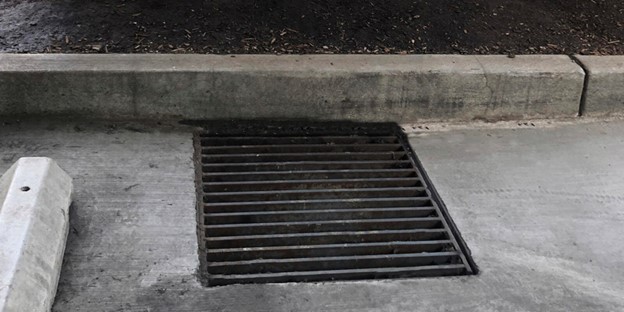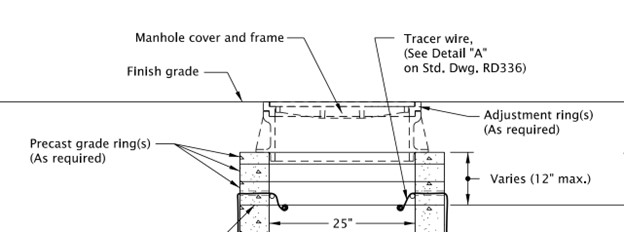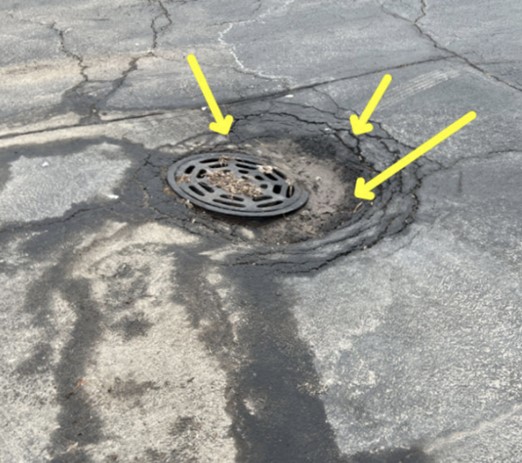Section 6.5.2 of the ComSOP titled Exteriors states that the inspector should inspect the stormwater drainage system, general topography, and parking area. To complete this part of the inspection, the inspector must first understand the role of catch basins and manholes. Technically, the ComSOP excludes the inspection of manhole covers, but an assessment of the area surrounding it can point to potential failures of the drainage system and other issues in the parking area.
Catch Basins and Manholes
The general topography of a commercial property’s exterior is exhibited through the slope or contour of the soft and hardscapes present, such as the parking areas and landscaping. For best drainage results, the slope should guide water away from the building directly to designated areas. A key feature to controlling the runoff from the slopes in the topography is the use of catch basins. A catch basin is a receptacle used to catch stormwater runoff from the street and empty it into the underground storm sewer system. It is designed to trap pollutants and filter debris from the water before it enters the storm sewer system. Note that most catch basins are not meant to be entered but have adequate access to allow them to be cleaned out.

A manhole is like a catch basin; it drains water and filters pollutants and debris. However, it is also large enough to be physically entered for maintenance purposes.
During the installation of manholes and catch basins, large concrete or masonry structures are placed throughout the property to create the drainage system. Additionally, a network of drainage pipes completes the storm sewer system. This system is typically installed by an underground sewer contractor who is not responsible for parking areas, concrete curbing, or landscaping and grading. These basins are placed throughout the property at an engineered elevation, but not at the final grade elevation. It is for this reason that the final few inches can be modified in the field. These adjustments are made by the contractor placing the final finishes.

Cast-Iron Frame and Cover
A cast-iron frame and cover are placed at the top of the underground structure. Below the cast-iron frame are the adjusting rings or bricks. The frame and covers are strong enough to support the loads needed for the location. Hence, more substantial loads might be in parking areas, while lesser loads might be in the general landscaping areas. Due to their location, these covers and frames are subject to impact, weathering, and other wear-and-tear.
The constant pounding from vehicle traffic, snow removal, landscape maintenance, and erosion from water contribute to the movement and damage of the frame and cover, as well as loosening of the adjustment rings.
Erosion and Damage
As the adjusting rings or masonry at the top of the unit begin to fail, water damage will occur around the sides of the catch basin or manhole. In addition, this will cause the adjusting rings and masonry to move and fail. When these failures occur, the areas around the frames and covers begin settling. This settlement undermines the structure’s integrity and could cause the area around the catch basin or manhole to fail.

Conclusion
The ComSOP requires the inspector to assess the above-ground stormwater drainage system and its related components. It excludes anything underground, as well as the removal of covers. However, the above-ground condition can provide important information about potential system failures that originate underground. For instance, settlement of the material directly around the structure and lid is a readily visible sign of possible failures within the system. Commercial property inspectors should also report on the general condition of the drains, including whether the drains are covered with debris.
Article Written By: Rob Claus, CMI®
Additional Resources for Commercial Property Inspectors:


